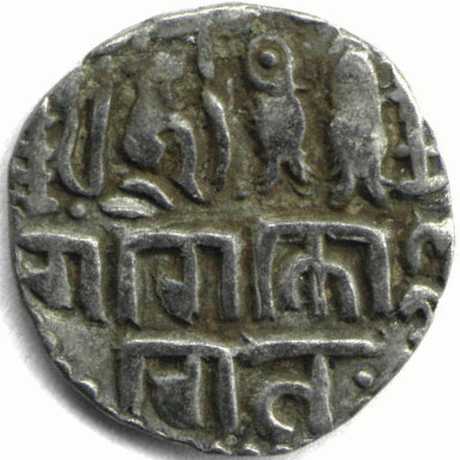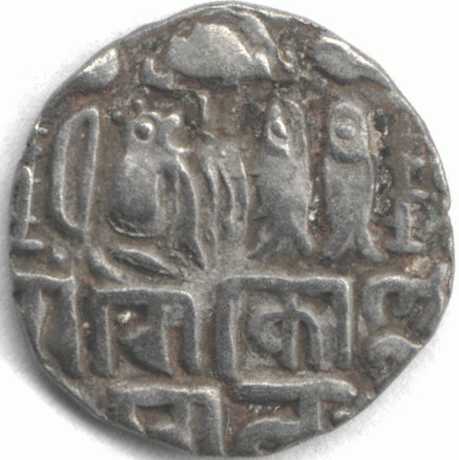| SPECIFICATIONS | |
| Denomination | Kasu |
| Alloy | Silver |
| Type | Struck |
| Diameter | 18.9 mm |
| Thickness | 2.6 mm |
| Weight | 4.19 gms |
| DieAxis | -30° |


|

| 
| ||||||||||||||||
| Rajendra Chola | Mitchiner #741-745 ; Biddulph #27 | |||||||||||||||||
Rajendra Chola succeeded in extended Chola occupation over the whole island of Lanka in 1018. He lost his life in the famous battle of Koppam on the Tungabhadra in 1044. Lanka became regained independence from Chola occupation in 1070 under Vijaya-bahu (1055-1110). This "seated Tiger" design is also used in a gold fanam coin.
The emblem of a "tiger facing two fish" was adopted by ThamilNadu, Thanjavur Uttama Chola (973-985) silver Uttama Chola coin, and also base gold Rajendra Chola coin. The seated tiger represented the Chola homeland, the upright fish for the Pandya conquest, and the Bow for the chera conquest, under the umbrella of great Chola Empire.
Rajendra-I founded his new capital at Gangaikonda Cholapuram about 1025 CE and assumed the title GanGai Konda Chola. The coin is discussed by Biddulph in his 1966 monogram on Coins of the Cholas. In his catalog he lists this coin #27 as by Rajendra I Chola (AD 1012-1044).
The silver coin was scanned at 600 dpi and displayed at 300 dpi. It was obtained in 2004 April from Satya Bhupatiraju who had purchased from Scott Semans.
Text edited from
* Coins of the Cholas: C. H. Biddulph, NSI #13, 1966.
* Oriental Coins: Michael Mitchiner,
London, Hawkins Publications, 1978.